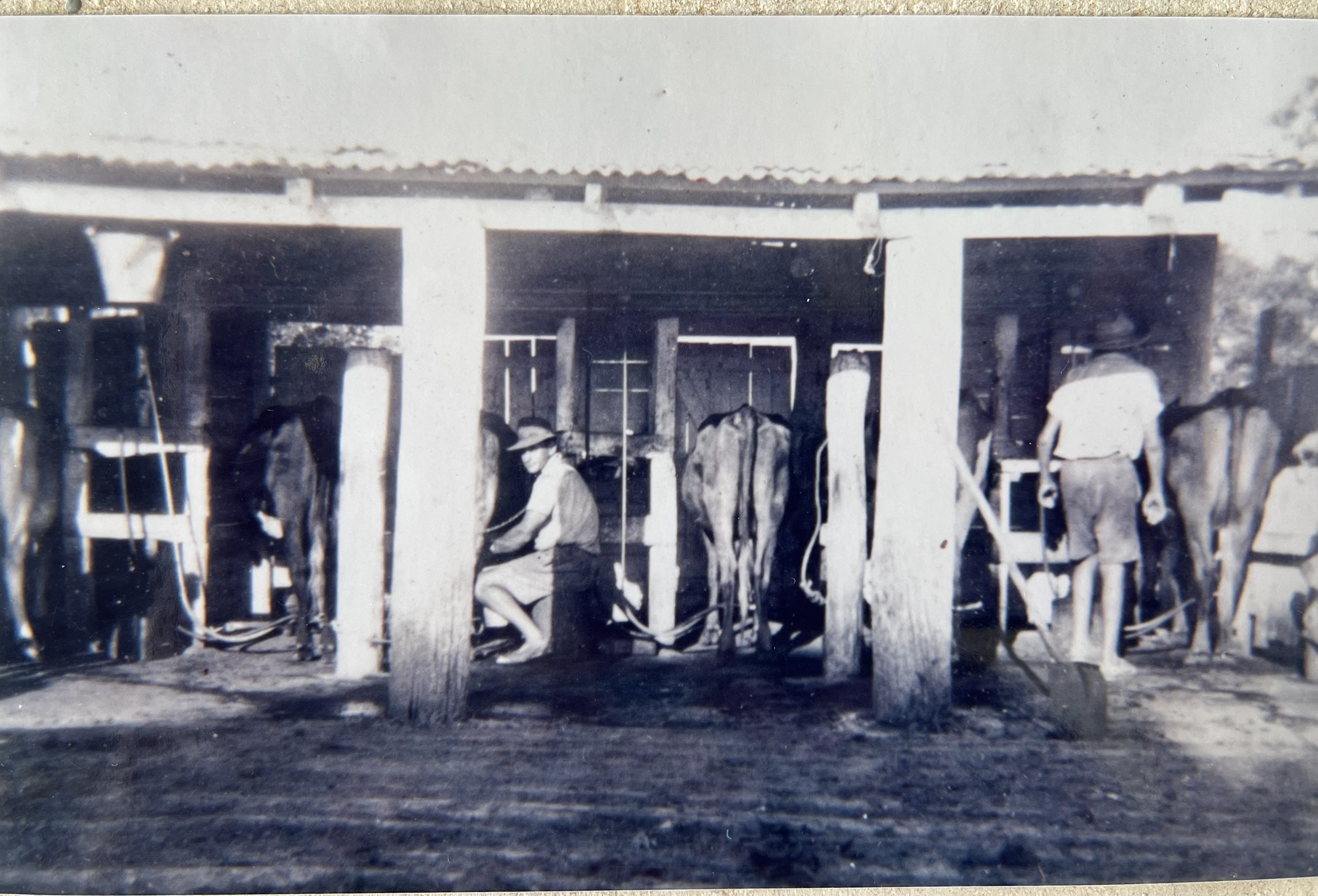


Part 2 of our story …
McCormack’s Dairy: (From a brief family history written by Dorothy McCormack/Graw)
As Mick and Aimee McCormack thought cane did not provide a viable living, they decided to go into dairying. In 1925, they installed milking machines. In the 1930s, helped by children, Joe and Dorothy, they were milking 300 cows and, on top of supplying milk to the town, were, at times, sending more than a ton of cream to the Mackay creamery.
Dorothy moved cattle from one paddock to another before and after school, helped with the dipping of the milkers and was always on hand to help if the machines broke down. When many of the workers went off to war, it became impossible to keep the dairy going. It was leased out to different families for a few years but was eventually sold to the Muller Family.
Nicol’s Dairy: (Registration No. 11629)
Alec Nicol purchased a dairy which he moved to “Willowbrook”, the family farm on the western outskirts of Proserpine. Registration of the dairy was granted on August 13, 1936. Sons, Clive, James and Neville looked after the dairy before and after school. They also kept pigs and it was James’s job to look after them.
O’Hara’s Dairy: (Registration No 914)
O'Hara's dairy was situated just across the river in the vicinity of the Airlie Beach turn off. Mr and Mrs Jack O’Hara milked about forty cows as well as working a small cane farm. All milking was done by hand, starting around 3am. When Jim O'Hara and his twin brothers, Ray and Vic, were about 11 and 12 respectively, their parents went to live on Dent Island. Their step brother, Harvey Hewitt, managed the farm and dairy and the three boys all had to help out. When Ray and Vic left school, Jim was left with most of the chores.
This extract from Jim’s memories of dairying, recorded many years ago, captures the tough life on a dairy.
“I had to get up at 2.30am and saddle up the horse to bring the cows home from a sixty-acre paddock in all weather. I would ride around the paddock calling the cows and they would head for the gate. Once it was opened, they headed for the dairy. We milked till about 5am, using carbide lights. I then yoked up the horse to the milk cart to deliver milk around the town. I sold two twelve-gallon cans and one four-gallon can but sometimes I had to get milk from Hewson's, McKenzie's or McKay's so that we had enough for our deliveries. The price was threepence a pint and sixpence a quart. When the delivery was finished, I would have to find out how much milk the ABC Cafe needed that morning, deliver it and check on the order for the evening.
During the day, the cows roamed down by the river. After school they had to be rounded up and the cows without calves had to be milked. More milk was then delivered to the ABC Cafe. The rest was separated, some made into butter and the surplus cream sent to the Mackay factory. By the time everything was cleaned, cane tops collected in a dray and put through the chaff cutter, it was usually 9pm before the horses were fed.”
“I will never forget my days on the dairy. There was never any time for pleasure and, at that time, 1 wouldn't have wished dairy life on my worst enemy.”
Story and photo courtesy Proserpine Historical Museum.
Dairy Farming was a demanding life